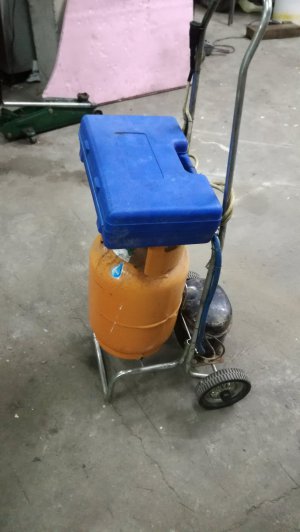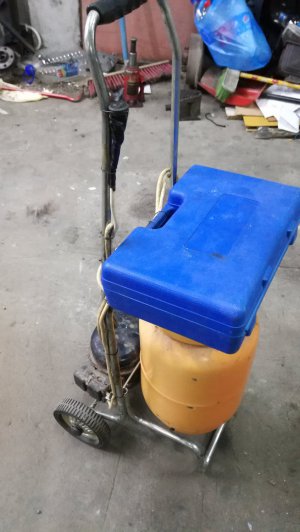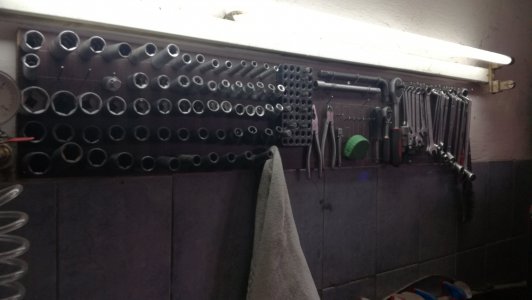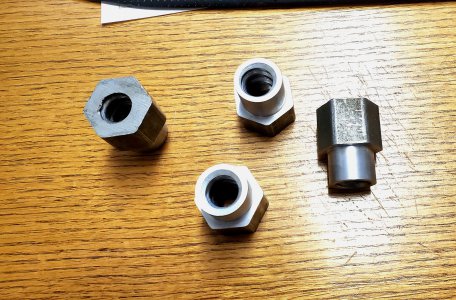- Joined
- Dec 20, 2021
- Messages
- 895
So feeling pretty lazy tonight. Dropped one of the pins into the lathe to try hard turn a rim on it. Actually worked well. Bought the chinese CBN inserts a few years ago (knowing I'd need them eventually!), and finally used them. That stringy chip looks hot coming off of there.
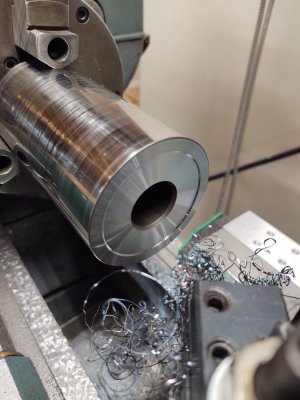
I did spend some time indicating in the chuck, and indicating the part in the chuck. Not perfectly, maybe within a couple tenths. When I faced the outer edge of the rim, you could see the wobble that was indicated on the pin earlier. Now checking it for square, it's within about .00025" over 5 inches of length. So, I guess that error is 50 millionths per inch. Hmmm, I guess that means the pin was running eccentrically, but on parallel to the lathe spindle...
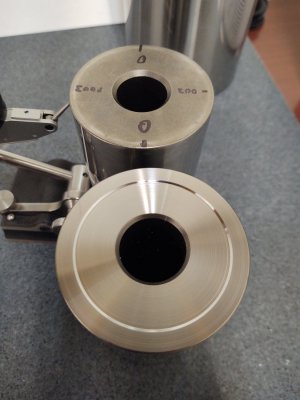
Next step will be to grind a honing plate. Someone had given me a nice heavy steel plate, that had a 1/2" grid machined into it. I ended up giving it to a buddy, but it turns out he hasn't used it so I'm snagging it back to grind a honing plate out of it. I'll probably machine or grind some radial slots in the bottom rim of this pin too, seems like cylinder squares often have that. I can see where it would be nice to collect any debris on the surface plate.
If this first pin turns out OK, I'll try it on the one with the pristine surface next...

I did spend some time indicating in the chuck, and indicating the part in the chuck. Not perfectly, maybe within a couple tenths. When I faced the outer edge of the rim, you could see the wobble that was indicated on the pin earlier. Now checking it for square, it's within about .00025" over 5 inches of length. So, I guess that error is 50 millionths per inch. Hmmm, I guess that means the pin was running eccentrically, but on parallel to the lathe spindle...

Next step will be to grind a honing plate. Someone had given me a nice heavy steel plate, that had a 1/2" grid machined into it. I ended up giving it to a buddy, but it turns out he hasn't used it so I'm snagging it back to grind a honing plate out of it. I'll probably machine or grind some radial slots in the bottom rim of this pin too, seems like cylinder squares often have that. I can see where it would be nice to collect any debris on the surface plate.
If this first pin turns out OK, I'll try it on the one with the pristine surface next...



